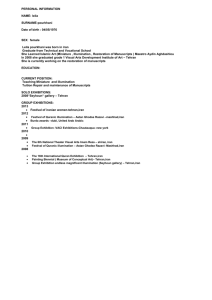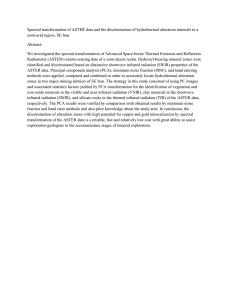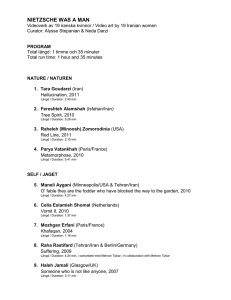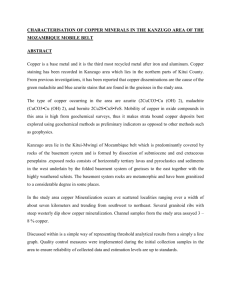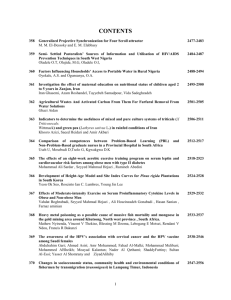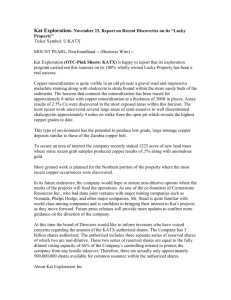Click here - The Gibson Group
advertisement
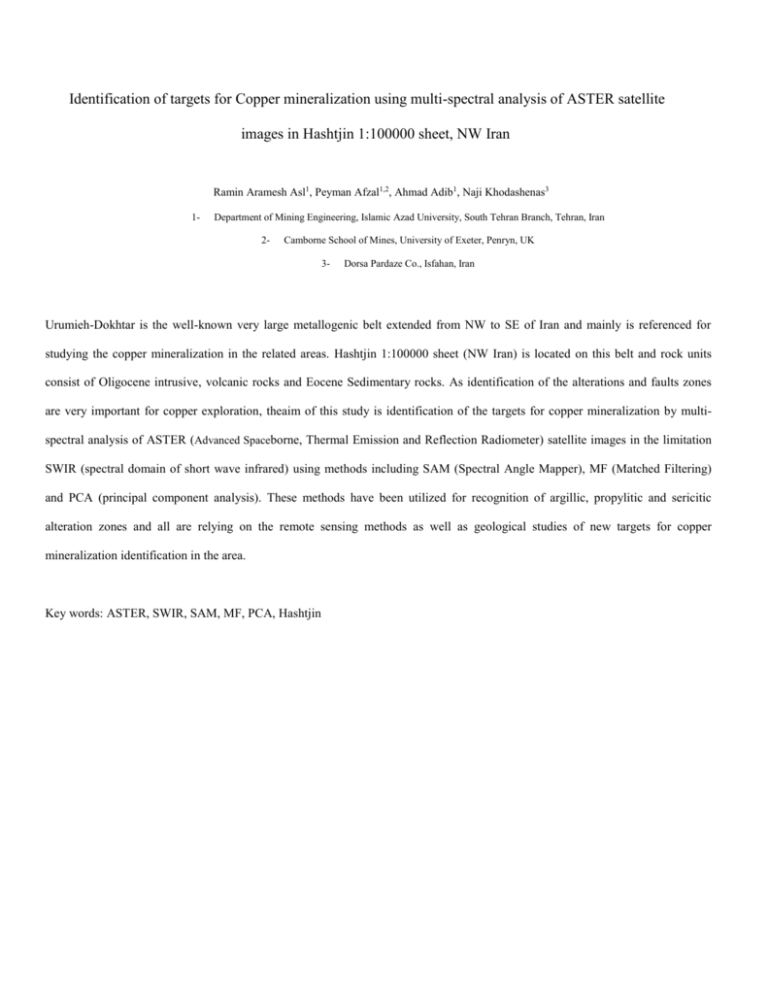
Identification of targets for Copper mineralization using multi-spectral analysis of ASTER satellite images in Hashtjin 1:100000 sheet, NW Iran Ramin Aramesh Asl1, Peyman Afzal1,2, Ahmad Adib1, Naji Khodashenas3 1- Department of Mining Engineering, Islamic Azad University, South Tehran Branch, Tehran, Iran 2- Camborne School of Mines, University of Exeter, Penryn, UK 3- Dorsa Pardaze Co., Isfahan, Iran Urumieh-Dokhtar is the well-known very large metallogenic belt extended from NW to SE of Iran and mainly is referenced for studying the copper mineralization in the related areas. Hashtjin 1:100000 sheet (NW Iran) is located on this belt and rock units consist of Oligocene intrusive, volcanic rocks and Eocene Sedimentary rocks. As identification of the alterations and faults zones are very important for copper exploration, theaim of this study is identification of the targets for copper mineralization by multispectral analysis of ASTER (Advanced Spaceborne, Thermal Emission and Reflection Radiometer) satellite images in the limitation SWIR (spectral domain of short wave infrared) using methods including SAM (Spectral Angle Mapper), MF (Matched Filtering) and PCA (principal component analysis). These methods have been utilized for recognition of argillic, propylitic and sericitic alteration zones and all are relying on the remote sensing methods as well as geological studies of new targets for copper mineralization identification in the area. Key words: ASTER, SWIR, SAM, MF, PCA, Hashtjin

![Amir Shams [ card ] 02](http://s2.studylib.net/store/data/005340099_1-e713f7ae67edd60d4c53ae5bb9448166-300x300.png)
